Nicknamed the city of 100 neighbourhoods, Marseille is mostly known as the oldest city in France.
Blessed with more than 300 days of sunshine a year, and with an ancient history, Marseille picked up our interest when we decided to take a road trip in Provence, and see the Gorges du Verdon.
I was still sleepy when I got the first glimpse of Marseilles. The bright shades of blue mesmerized me the next second, and I couldn’t take my eyes off that piece of land. The white layer of clouds was a splendid backdrop to the city where we were about to land soon. I felt like royalty at the window, where I could see in all its splendor the Mediterranean shore and all the scattered islands nearby.
As a the second most populous city in France, Marseille is a great landing base to start a trip to the South East of France. A city of extremes in many ways, it is known as the most multicultural city in France, and not necessarily the most visited one. I didn’t have much expectation from Marseille, but now I couldn’t wait to start a new journey across the southern region of France.
Le vieux Port (The old port)
When the Greeks first arrived in this area in 600 BC, they landed in Lacydon, a rocky Mediterranean cove. An ideal harbour, with perfect protection from the sea and enemies, the cove was adopted as a Phocaean home for about six centuries, when they lost their independence following the Roman siege in 49 BC, when Caesar claimed the city, and initiating the Gallo-Roman culture. Despite the fact that many other invaders fought for the city, such as the Visigoths in the 5th century, the Arabs in the 8th century, etc, the site of the Old Port of Marseille knew good times over the years, thriving in its own way. It has now become the hustle and bustle of the whole city, where all the major events take place, and it is the landmark of the people of Marseille.
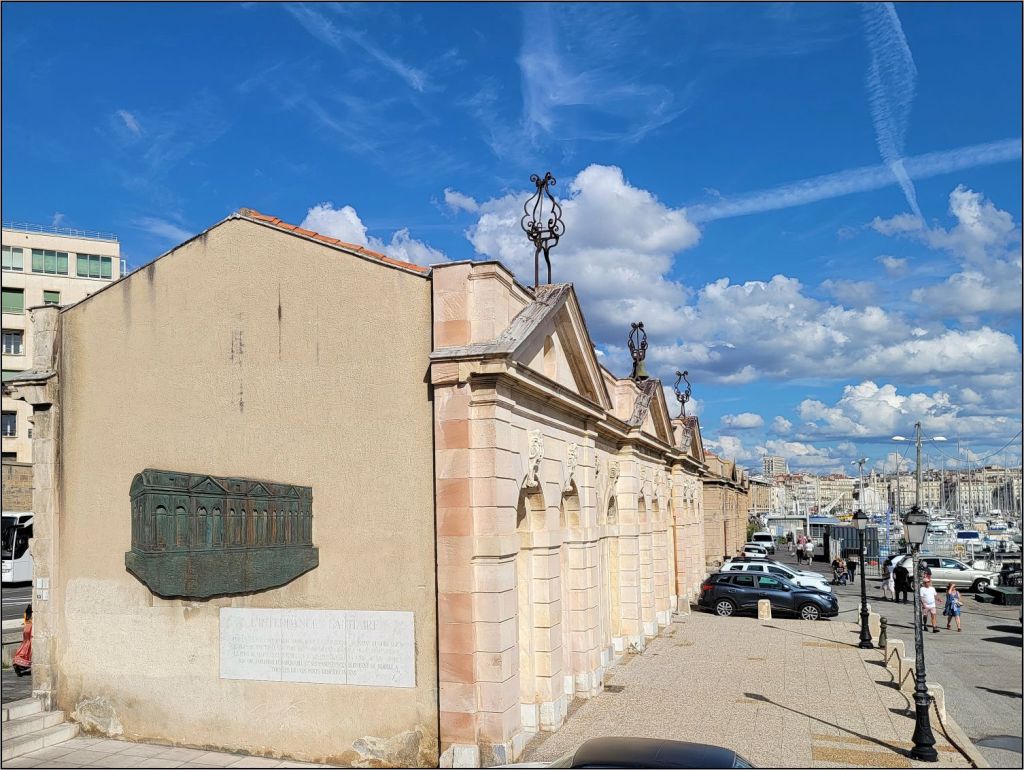
With a prestigious ancient history, this port is proudly guarded by two forts: Fort Saint-Nicolas and Fort Saint-Jean, where generations of traders and not only have left their mark. Both forts were created in the 18th century, offering a worthy protection to this strategic port.
Filled with boats of all kind, the Vieux Port boast with activity. Walking around the ‘U’ shaped marina, or taking Le Petit Train for some sight-seeing are the most popular activities. A long line of boutiques offers quaint products with a touch of Provençal flavours.
Le Panier
The main attraction, and a well-known tourist area, is no doubt Le Panier (the basket). It is the oldest district of Marseille, where Massalia was born, the oldest settlement in this area. The Greeks wisely set up their trading post on the northern side of the port, taking advantage by the higher position that was still close to the sea.
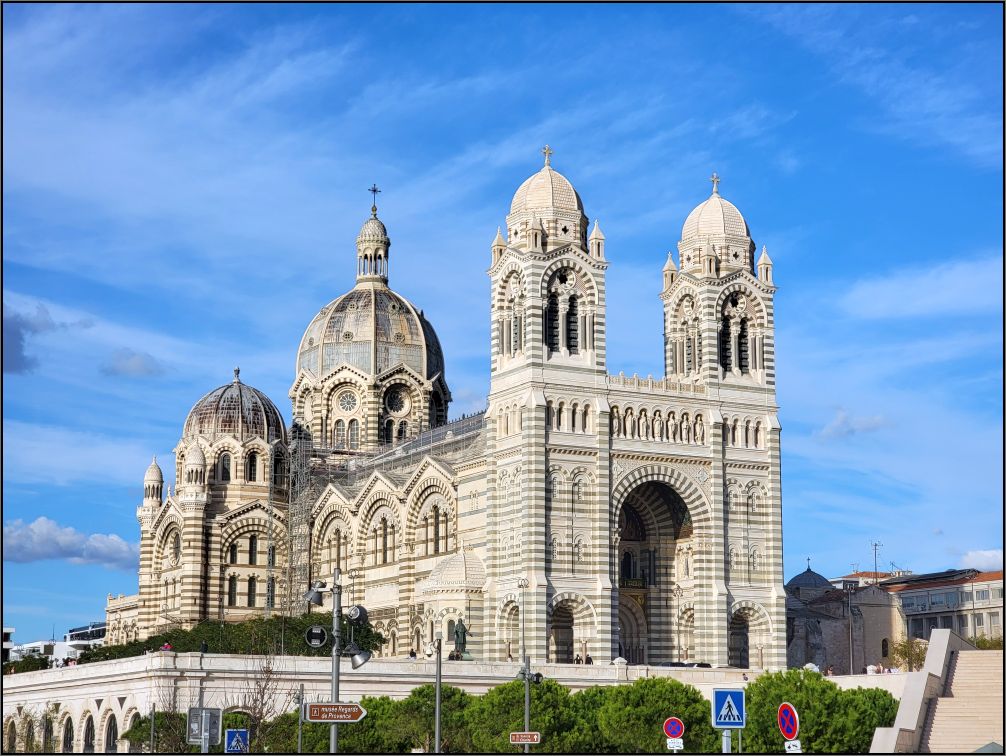
If you’re looking for a European city break, you might like to read: Venice, wandering through the old city.
Not always with a good reputation, the neighbourhood went through many changes over the years, including the renovation and urban development from the end of 20th and beginning of the 21st century.


The most popular district of Marseille invited us for a good walk until we eventually got (almost) lost through the narrow streets.
If you’re looking for a European city break, you might like to read Vienna vs Budapest part 1, part 2.
We have never imagined how narrow the streets of Provence can be, not necessarily for pedestrians, but also for traffic. If you want to venture driving through the maze of those narrow streets, you will definitely need to master the backing up. We witnessed one driver (the brown car below) having to reverse three times until he found the passage free to pass the narrow section of the street.
Street art
Between small café terraces, more or less dilapidated buildings, and countless boutiques, we found our way to Montée des Accoules, another narrow alley with colourful façades. But the street-art is everywhere. There is really no map to show you where to find the paintings, but all you have is to wander around, and find them for yourself.

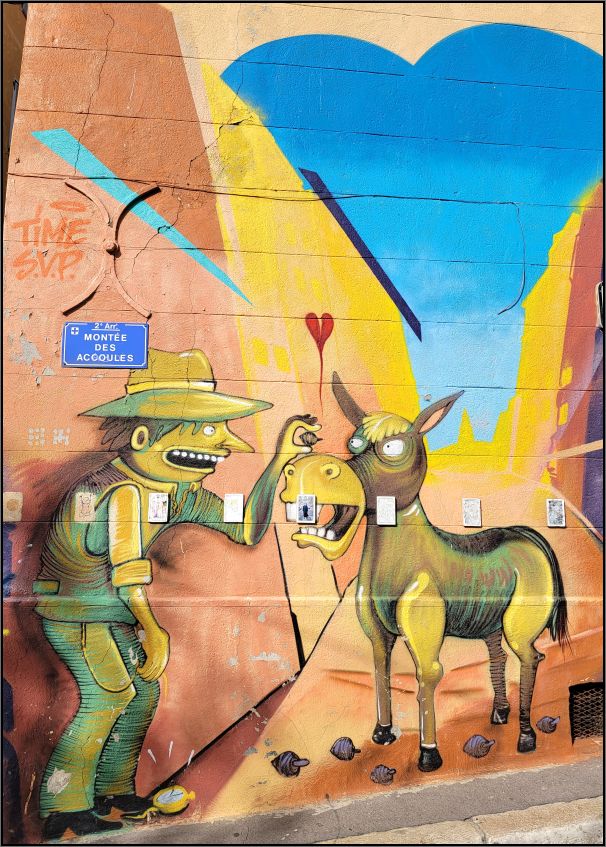

The artistic vibe is evident on so many walls along the myriad of alleys across the district. What a better way to get to know a city that walking aimlessly, but you also don’t really want to get lost as some of the streets look quite intimidating.

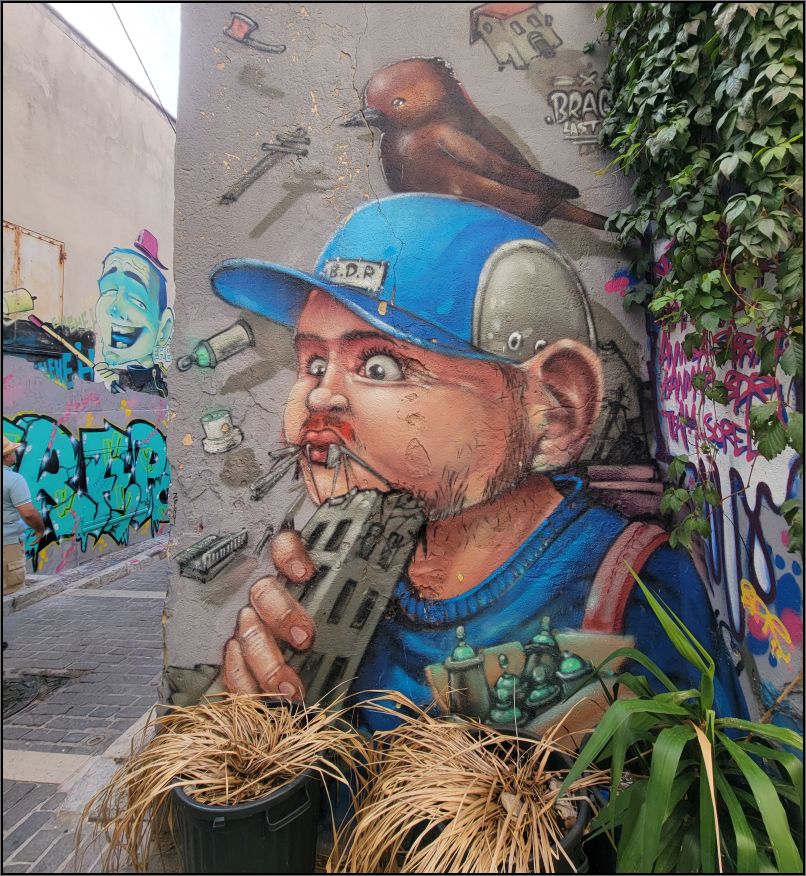


The vivid character of the neighbourhood, and the north African influences can be easily observed, but my feeling was that the street art was more of a cover for some distinctive evidence of poverty, rather than for the eyes of the tourists. But without a doubt, the artwork shows a genuine talent of the residents, making the stroll throughout the city much more enjoyable.
Architecture
You cannot walk past the town hall on the right bank of the Old Port without noticing L’Hotel de Ville, a beautiful example of a Provencal Baroque art, due to its deep Genoese influences. The intricacies from the windows and the rich façade cannot be overlooked, if you like art or history. Looking at the cherubs holding a crown, and even the fleurs de Lys, I could easily say this building is from another era, when Louis XIV wanted the city to take a new turn in 1653.
If you’re looking for a European city break, you might like to read: The best things to see and do in Rome.
Nestled in the heart of the ‘Panier’, another historic building is La Vieille Charité, a marvel of the 17th century, built as a shelter for the poor and homeless. The chapel in the middle of the courtyard is an example of pure Roman Baroque style with its elliptical dome in particular. Transitioning from a hospice to a cultural centre, La Vieille Charité remains an important piece of architectural style and history.
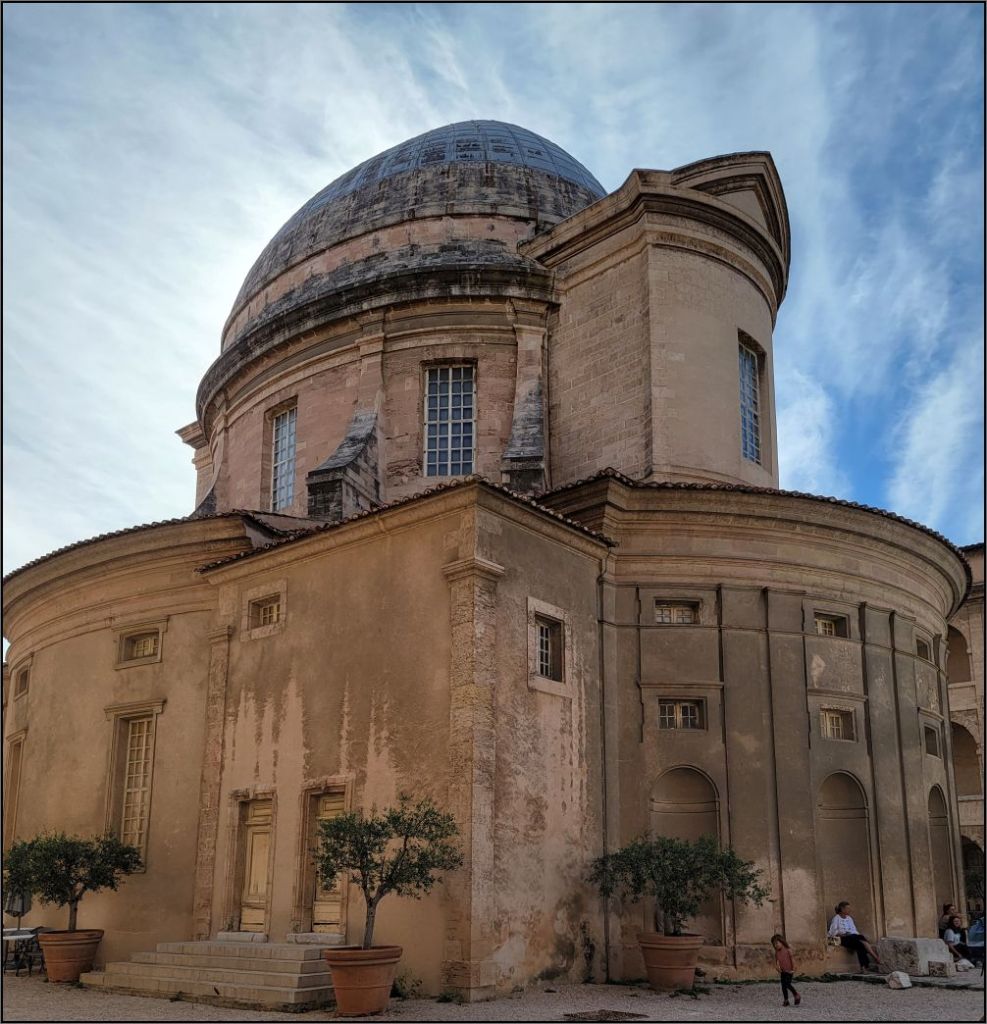
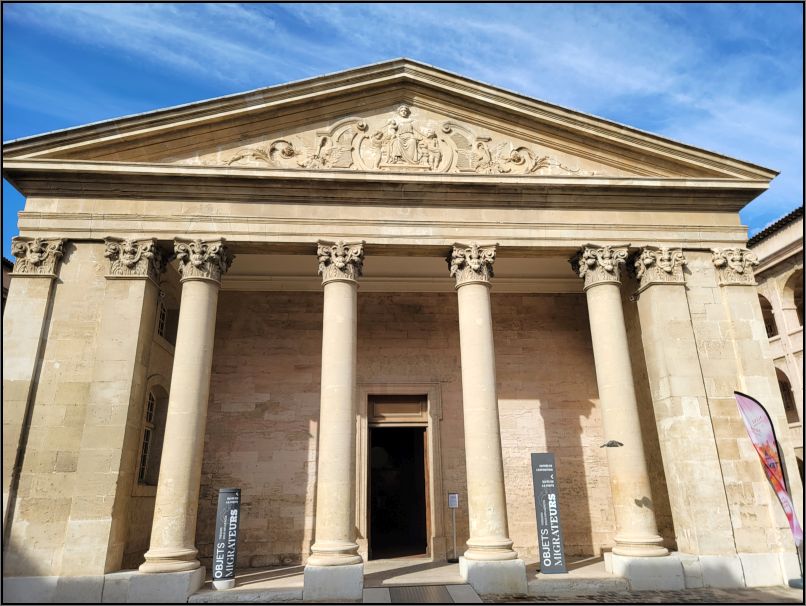

La Vieille Charité
Several historical buildings were lucky enough to be reconstructed, such as the Hotel Dieu. Built originally as a hospital in the 12th century, it was extended and revamped into what it is today through several projects, becoming a 5-star hotel as of 2013.
But despite their state, we could see buildings like Maison Diamantée (Diamond House) or Hotel Echevin de Cabre that are still in use today. The short door of Cabre Hotel, one of the oldest houses of Marseille – built in 1535, can be quite intimidating, reminding us that people from 500 years ago were so much shorted than our generations.
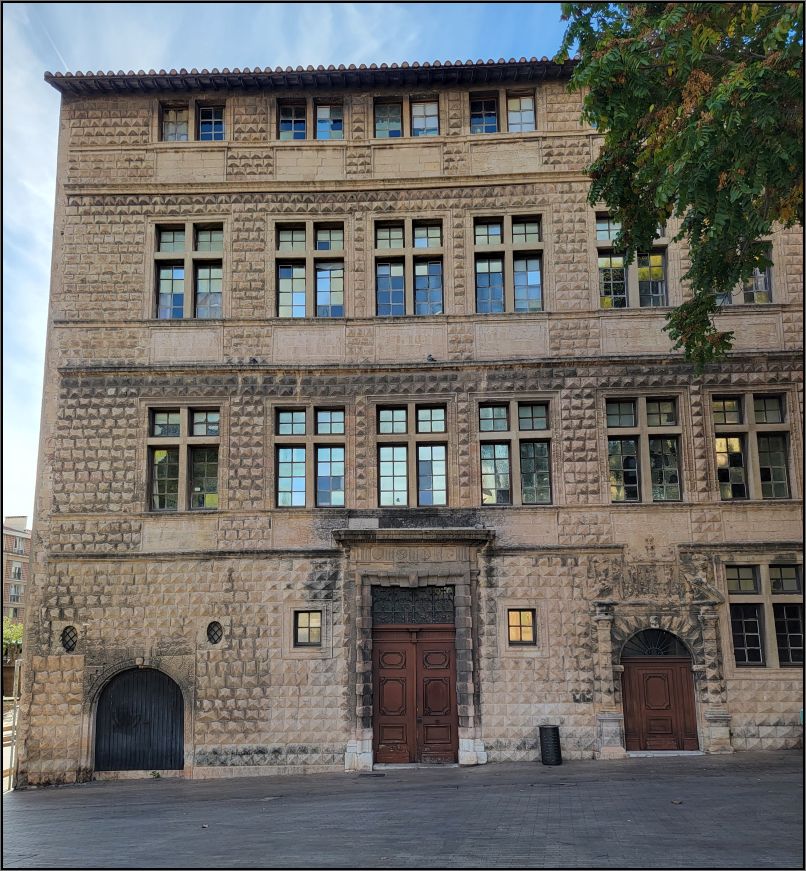

But the architectural styles are not set in stones like the buildings along the Rue de la Republique. With a mixture of population from all parts of the Mediterranean, from Europe and Africa, the architectural designs have evolved over the years, and various mixes of patterns and influences can be observed everywhere.
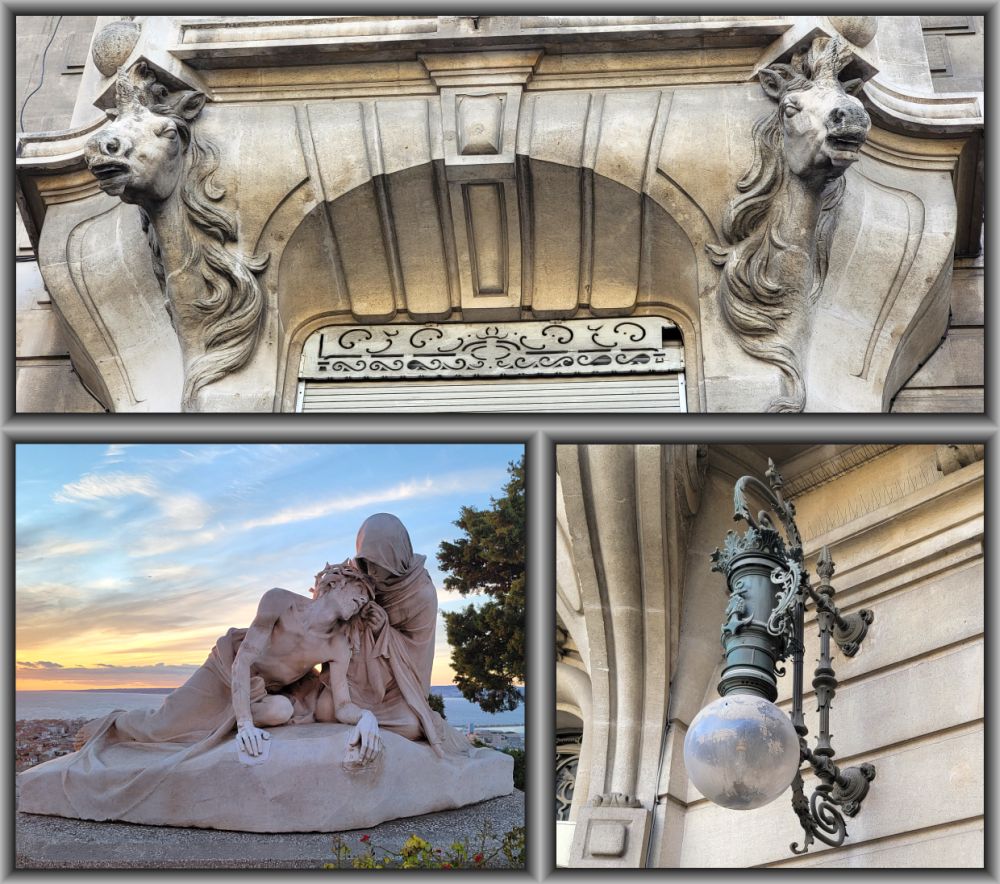
If you’re looking for a European city break, you might like to read: Falling in love with Florence.
The Basilica of Notre-Dame de la Garde
The basilica, built in a Romano-Byzantine style is another symbol of Marseille. Built on top of the Garde Hill, the highest point of the city, it offers a 360 degrees panoramic view of Marseille, and of course the sea. Best time to visit the church is in the afternoon, before 6pm when it’s the closing time, so you can still visit the church before the sun sets over the horizon. If you are a sunset lover, you can hang out a little bit more at the top of the hill, until the skyline colours blend with the sea.
But the iconic figure of the city remains the 11.2 metres tall Good Mother (or Bonne Mère as Marseilles like to call her) who watches over sailors, fishermen, and all residents. The Virgin looks at the sea and not at her child, presenting him to the world in this way.
Trivia: Marseille became famous for their national anthem: “La Marseillaise”, composed in one night during the French Revolution in 1792, and adopted as the anthem of the Republic in 1795. The song got its nickname after being sung by the hundreds of volunteers marching to Paris, starting its life as a revolutionary battle song, and a hymn to freedom.
But today, Marseille is not all about the architecture, or its ancient history. The city boasts with a unique multiculturalism, a meeting point of various influences, an art city in itself.
Tip(s) of the day:
* This is one of the sunniest cities in France, don’t forget your water, hat and sunscreen;
*Getting a digital map of all the attractions you want to see can be very handy. You can easily get distracted and lost between the countless alleys and pathways;
*We felt safe everywhere we went, including all the less desirable alleys.
~ visited in September 2022
If you like Provence, or France, you can check other posts of our ‘One week in Provence’.

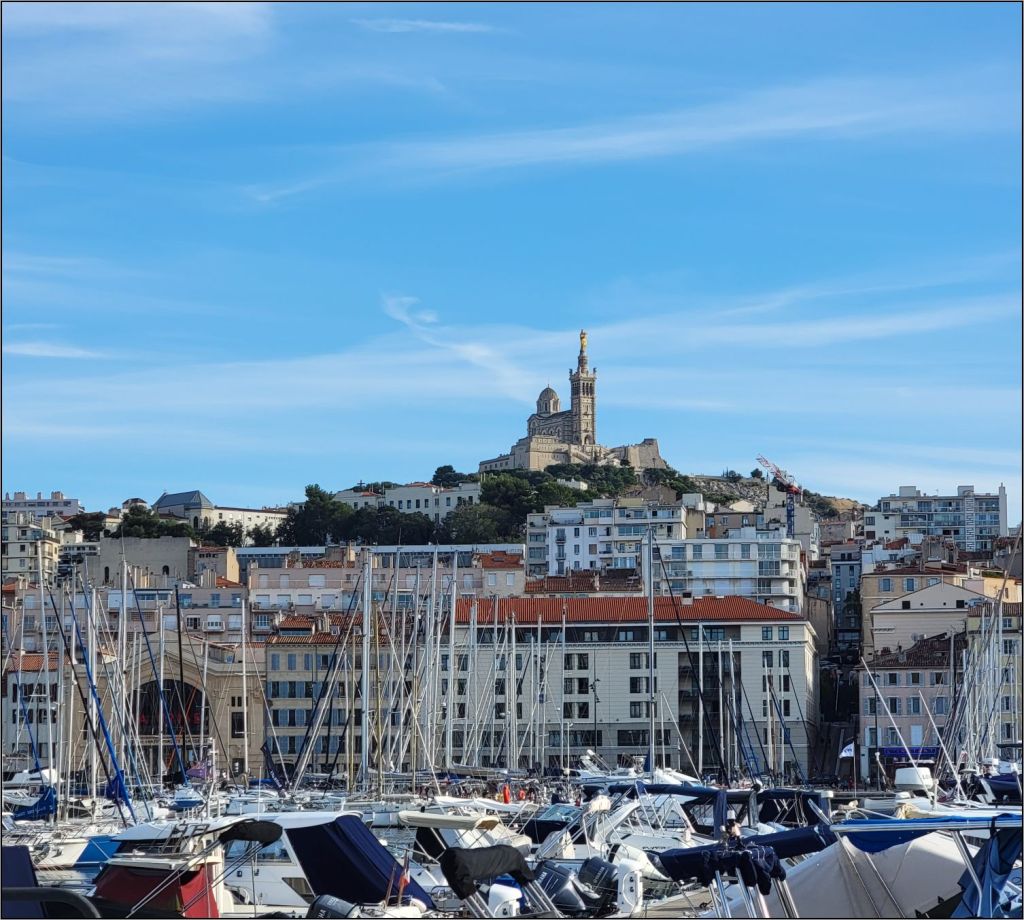



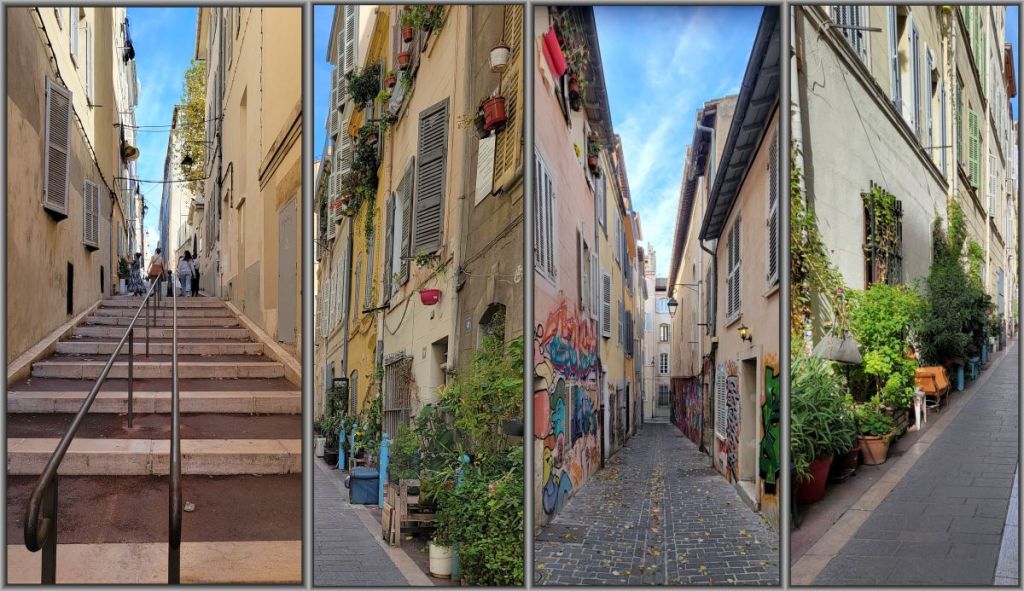
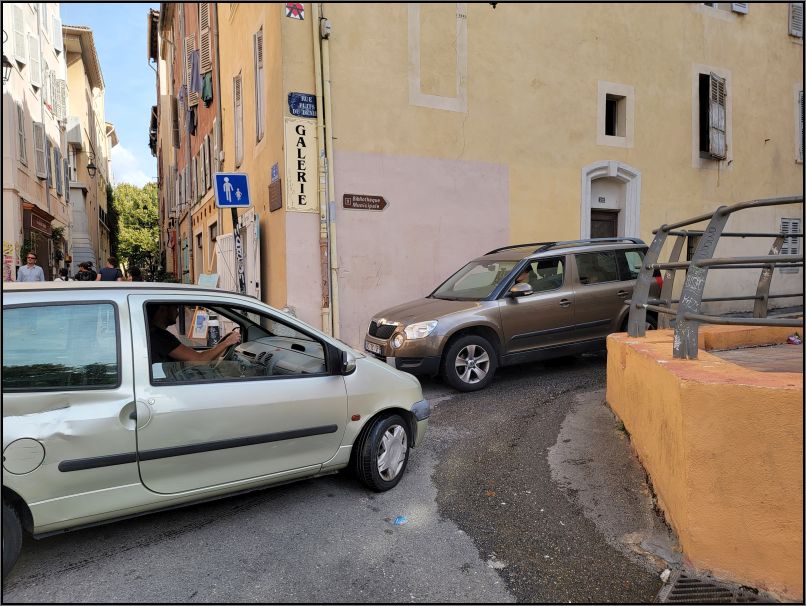

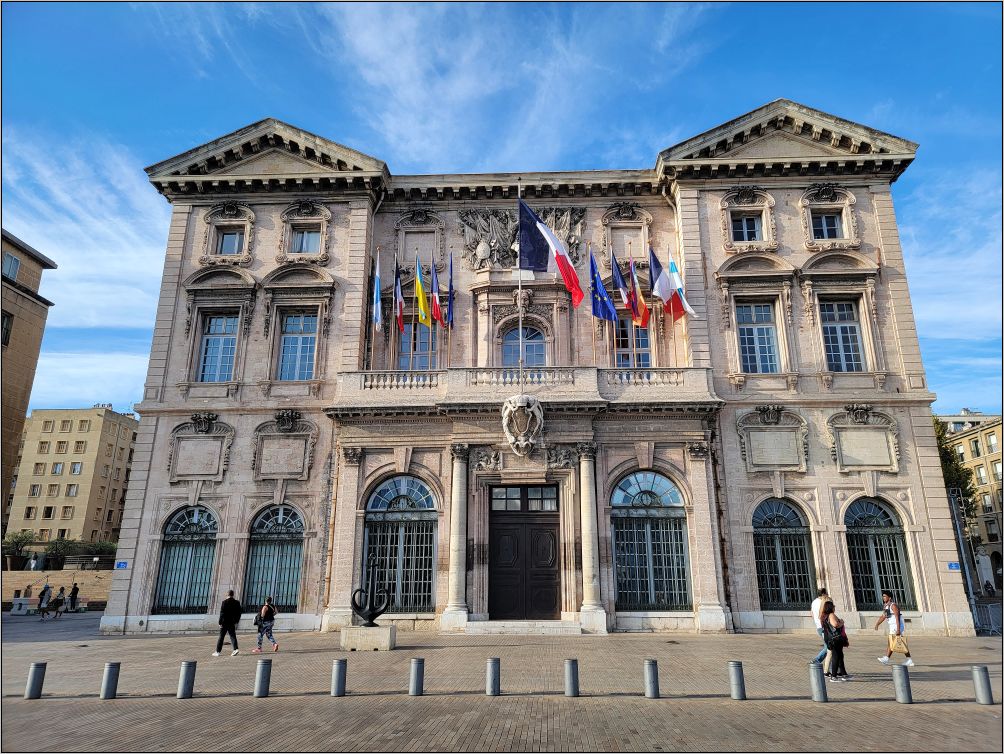

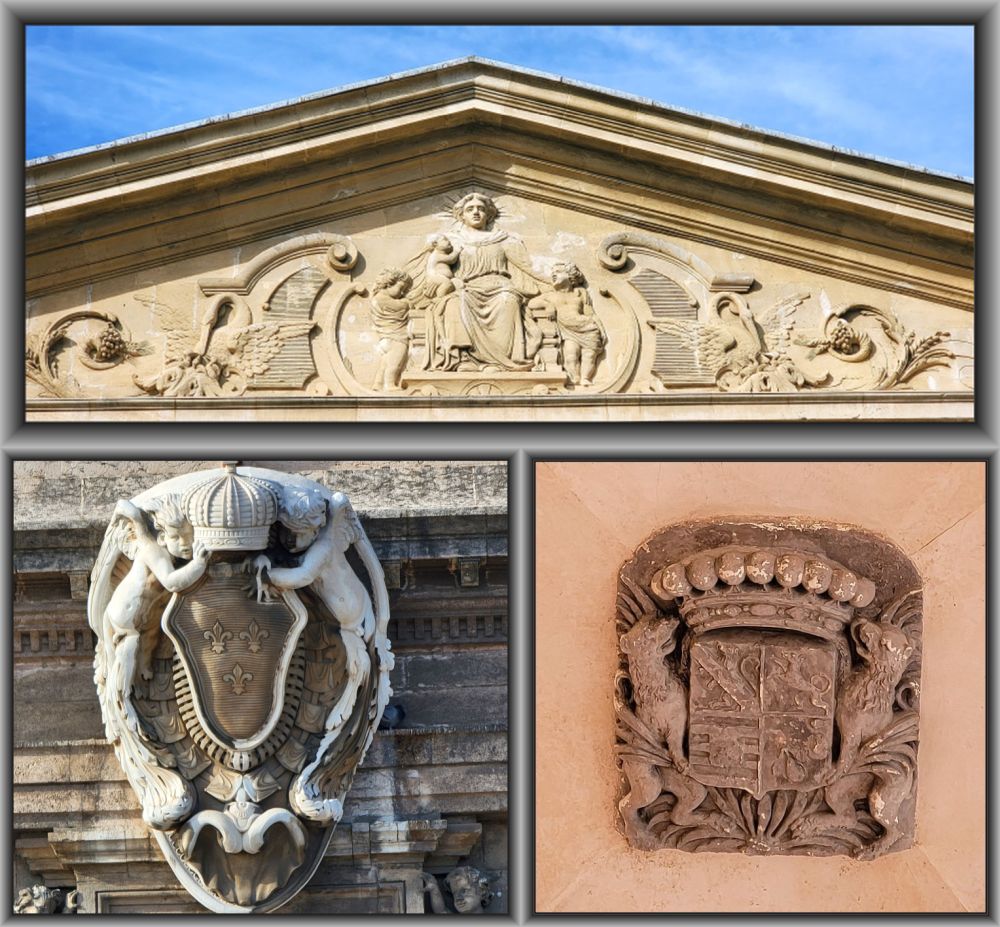
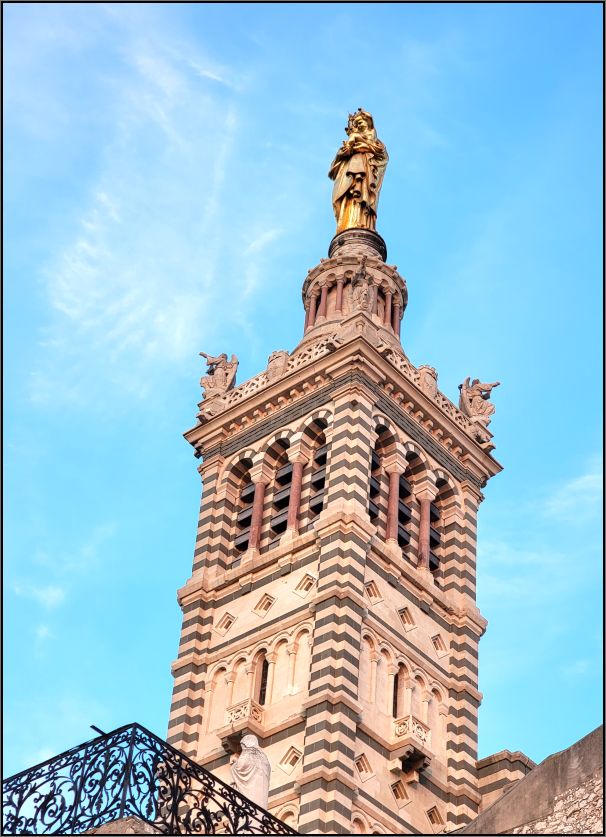
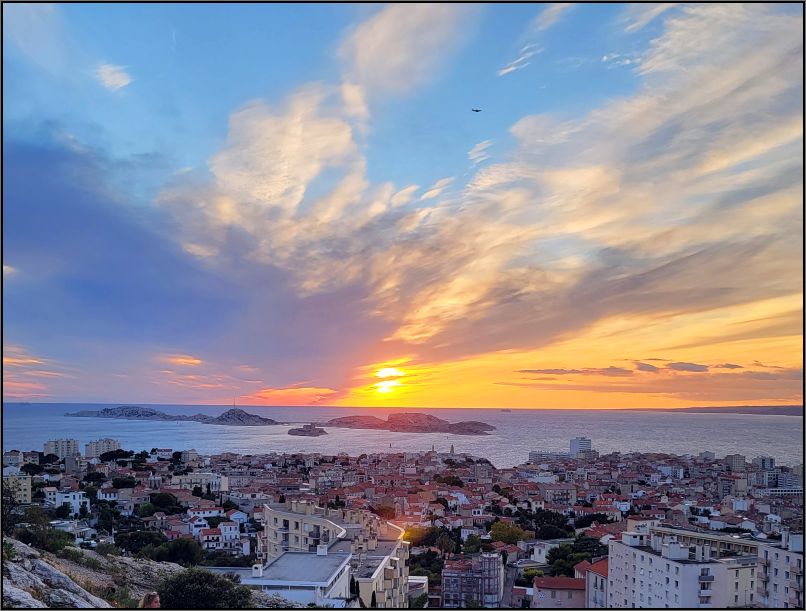
What a great city! The architecture looks amazing especially the cathedral. And the cute narrow streets, but I can’t believe people drive on them! Lookslike you had a great time in Marseille, Maggie
LikeLiked by 1 person
Indeed, we had a great time in Provence! You can’t believe how people can drive on all those narrow streets, no wonder why they all (most) of them have at least few dents in their cars🙂 It’s their way of living..
Christie, xx
LikeLike
Haha I bet they have a lot of dents!
LikeLiked by 1 person
When I visited Marseille a few years ago, I went with warnings of racial tensions, unsafe streets and hostile atmospheres ringing in my ears. I left having had a wonderful visit full of delights and surprises and a love of the city that I have retained to this day. Lively, vibrant, gorgeous harbour, great food, the Ile d’If….great city.
LikeLiked by 1 person
Marseille reputation precedes it, so we’ve heard that as well, reason we did not reserve too much time for the city. I would have liked to visit the If Castle, but leaving it for next time😉
I’m glad you had also a wonderful time in Marseille!
LikeLiked by 1 person
A few years ago, I watched the television series Marseille, set in Marseille starring Gérard Depardieu and fell in love with the city. I know that the city is known for its petty crime and has a bad reputation due to its problems with trash, but you just have to be extra cautious of pickpockets, especially in crowded tourist spots and on buses, the metro, and the airport shuttle. And given its Mediterranean climate and many of its beaches, I would love to explore it one day. Plus it is a perfect spot to spend a few days before heading to other locations in the South of France. Thanks for sharing and have a good day 🙂 Aiva xx
LikeLiked by 1 person
My understanding is that Marseille bad reputation has improved a bit in the past years, and it’s not worse than Paris, or Corsica, in this regard. I’m not quite sure though if it’s because there are less gangs in the city, less activity, or they moved away to Paris suburbs for example.
One needs to be cautious in any crowded tourist areas these days, and the fact that we visited it at end of September helped a lot with the crowds, which were minimal – at least in Marseille😉
Have a beautiful day🙂 xx
LikeLiked by 1 person
🥰🥰🥰
LikeLiked by 1 person
We once went to Marseille for a football match but saw relatively little of the city (just the port and a few streets in the old town). Reading this and seeing your photos suggests to me that we should go back some time!
LikeLike
We have also lingered around the old port and the old town, where most of these beautiful buildings are, but with so many alleys and streets, we extended our walking plan.
Hope it was a good match, and the trip was well worth it🙂
LikeLiked by 1 person
Marseille was an interesting site we visited . This Cathedral was so fascinating. Thanks for sharing this info and amazing images. Anita
LikeLiked by 1 person
Thank you, Anita!
Marseille was a great starting point for our trip in Provence.
Christie
LikeLike
We have been to Provence 3 times, but never to Marseille. Glad you found it safe. We had heard you really needed to be careful there. We love the cities, villages and towns of Provence, as well as the food and wine. Hard to go wrong in the sunny South. Thanks for taking us to Marseilles, Christie. Allan
LikeLiked by 1 person
So true, I love how you said that “hard to go wrong in the sunny South”🙂
We’ve also heard about Marseille bad reputation, although my understanding is that it’s getting better lately. We chose to visit the central area (where most of the historical buildings are), and to avoid the north side of the city, where the infamous neighbourhoods are located. We felt really safe during the day time, even on the hidden alleys that leave much to be desired, and the lack of the crowds (at the end of September) helped a lot to feel at ease.
We loved our time in Provence, and what is not to love! It was our second time there, and I’m sure it will ne a next time🙂
LikeLiked by 1 person
What a fantastic trip! I enjoyed your post every step of the way.
LikeLiked by 1 person
Thank you Kellye! Have a lovely day,
Christie
LikeLiked by 1 person
I hope to visit Marseille soon; my cousin lives there are loves the city. Great post!
LikeLiked by 1 person
How wonderful! You are so lucky to have some insiders there, finding maybe some secret places for you, off the beaten path🙂 You will have an amazing time! xx
LikeLiked by 1 person
Thanks
LikeLiked by 1 person
Oops! Merci beaucoup!
LikeLiked by 1 person
🥰
LikeLike
Having so much sunshine sounds so lovely, especially now since it’s been so drab and dreary (and cold) outside! It was nice to momentarily escape from it all by reading about your time in Marseille and looking at your beautiful pictures.
LikeLiked by 1 person
Thank you Linda! Stay warm🥰
LikeLiked by 1 person
So nice to see blue skies and sunny weather … the city looks pretty nice, too! 🙂
LikeLiked by 1 person
I already miss those sunny days, especially now, when the weather is cold and dreary here in Ontario. Have a wonderful weekend Lexie! 🥰
LikeLiked by 1 person
Wow, what a great visit to Marseille, Christie. Thanks. And I couldn’t agree more than with your statement about the best way to learn a city is to walk it. So true.
LikeLiked by 1 person
Thank you, Curt! We already miss those sunny days, and the long walks also, but glad we have wonderful memories. It’s time to make some new plans😊
LikeLike
We head for a trip up the Nile in two weeks, Christie. Needless to say, we’re excited.
LikeLiked by 1 person
I bet you are😊 Safe travels!! xx
LikeLike
Thanks, Christie.
LikeLiked by 1 person
I did enjoy that visit, Christie. The photos I’ve seen of Marseilles suggested that it was an interesting city and I always love a harbour. Many thanks for taking me there.
LikeLiked by 1 person
Thank you for coming along, Jo! Hugs, xx
LikeLike
🤗💕
LikeLiked by 1 person
This is great information. Saving it. Love your photography. Cheers!
LikeLiked by 1 person
Thank you!! Cheers🥰
LikeLike
Thank you for sharing this interesting trip, Christie.
LikeLiked by 1 person
You’re very welcome😊
LikeLike
havent visited marseille it’s really a bit different from what I imagined. By which i mean it’s drier and Mediterranean which i guess i should have figured!
LikeLiked by 1 person
I love the Mediterranean weather! The sun and the light breeze make it perfect!
LikeLike
Beautiful photos. My wife’s oldest sister lives in Marseille so I’ve been there a few times so I recognized many of pictures. Another interesting place not far from Marseille is Aix-en-Provence
LikeLike
I’m glad you enjoyed my photos, and thank you for stopping by! Our next stop was Aix-en-Provence, we couldn’t miss it, it’s only a stone throw away🙂 Stay tuned for the next post😜
Have a wonderful afternoon!
LikeLike
You have documented your experiences in this place beautifully. I have never been to Marseille and it certainly felt like you took me there. It seems to have a little bit of everything: sun, sea, elegant architecture, fine history and so much art. Your closing sunset shot is another winner.
LikeLiked by 1 person
I already miss those sunny skies (and not only), especially these gloomy days. But hope for the best, we should see the 🌞 back in town tomorrow😊 Have a beautiful weekend!
LikeLiked by 1 person
Beautiful picture of Marseille from the plane! The cathedral is quite impressive and the narrow streets are so typically European (or should I rather say Mediterranean)? Marseille looks like a beautiful city to wander through – you have so many beautiful photos here … that last sunset photo is a sure winner!
LikeLiked by 1 person
Thank you, Corna! Indeed, the narrow streets are rather typical Mediterranean, I think. Marseille only gave us an idea of what we were actually going to see in several villages from Provence😉
LikeLiked by 1 person